Good Money After Bad
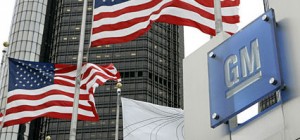 The United States taxpayer will be giving Chrysler $50 million a day in hopes that it will be absorbed by an Italian firm and ten times that to GM for, well, no apparent reason.
The United States taxpayer will be giving Chrysler $50 million a day in hopes that it will be absorbed by an Italian firm and ten times that to GM for, well, no apparent reason.
The Obama administration will make about $500 million available to Chrysler LLC through the end of this month as it seeks to reach an alliance with Fiat, and up to $5 billion through May to help General Motors Corp restructure outside of bankruptcy, an independent oversight report on the Treasury Department’s corporate rescue fund said on Tuesday.
To say that this makes no sense whatsoever is an understatement. The talks with Fiat are not going well and the deadline imposed by this same administration — and Canada’s government, too — is nine days away (although I counted today in calculating the average daily amount we’re wasting). In the unlikely event the deal goes through, all that will be left of Chrysler is the brand name and Jeep. (Jeep, as those with long enough memories will recall, is in turn all that’s left of American Motors.) And, um, we’re paying GM $5 billion more to help them go bankrupt in a more orderly fashion? Whiskey Tango Foxtrot, over?
Separately, the United Auto Workers (UAW) union urged its members to lobby the White House by phone or email to ensure that workers and retirees are treated fairly in negotiations at both companies on new concessions, which are considered vital for the automakers’ to survive.
While I’m no fan of unions and believe autoworkers were grossly overpaid for decades, the only rationale for saving GM and to keep some small piece of Chrysler around is to prevent devastation for their workforce and others who make their living as a result of the industry. How far would $5.5 billion in direct payments go toward meeting that goal?
UPDATE: As is often the case, Dave Schuler was way ahead of me on this. Writing in mid-December:
If we’re bound and determined to spend $5 billion a month for the sake of people who work in the auto industry, here’s my suggestion: pay the money to them directly. We don’t need GM or Chrysler for that. Let’s start a roster of people who’ve been laid off or fired from the auto industry. They’ll need a W-2 and documentation of the termination.
The estimate I’ve seen is that may be as many as 2 million people. If it’s that many and if you pay them directly, that would come to $2,500 per person per month. Not princely but enough to get by on.
Let that payment expire in 2011 (when the UAW contracts expire). That should be enough time for them to make other arrangements.
I’m not sure what “other arrangements” a 50-year-old assembly line worker will be able to make by then but a stipend through then — perhaps with some additional funding for training and/or job hunting and/or relocation expenses — would be a reasonable use for taxpayer money under the present extraordinary circumstances. Even Ronald Reagan supported a “safety net” and fulfilling “obligations that spring from our national conscience,” after all.

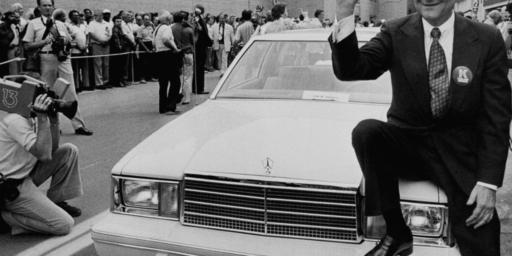

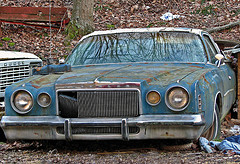
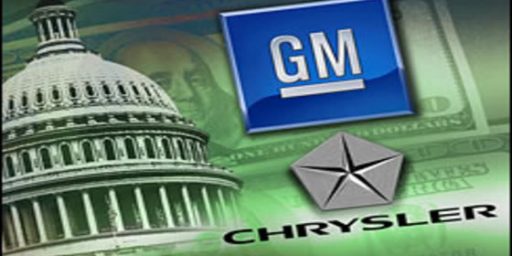
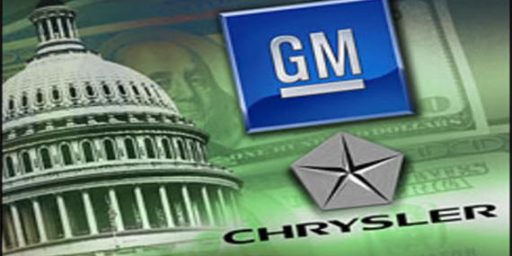
That’s, essentially, what I’ve been arguing for some time. If the objective is to preserve jobs, how much sense does it make to subsidize the companies when any reasonable business plan for them requires them to cut jobs, anyway?
The objective should be to help the people, not preserve the companies. The companies aren’t theme parks or historic monuments. Their only value resides in their ability to generate profits which looks pretty questionable.
But the people are worth helping and the amount already spent and that which will probably be spent in the future can go a long way towards doing that.
Here’s my post from early December on exactly this subject.
While I’m no fan of unions and believe autoworkers, management, executives, and shareholders were grossly overpaid for decades…
There fixed it for you, if one group was overpaid, then logically they all were.
The orderly way to go bankrupt is through the tried and true lawful procedures. What is being done by facilitating bankruptcy without filing bankruptcy is some connected party is being protected above and beyond their rights in a bankruptcy procedure. I don’t believe this is the UAW as it appears they’ll end up in the same position either way: big contract, no jobs. I’d speculate foreign investors, pension funds and insurance companies holding bonds.
Perhaps some wanted to prevent the memory of back when GM went belly up but we are past that now.
Of course, it could all be to save NASCAR. As much as Obama and the Dems hate the bitter and clingy, any half decent political operative knows the danger of having a lot of angry NASCAR fans looking for something to occupy their attention. There are a lot of iced tea drinkers there who might decided to join the party.
Is the money we’re giving to the companies a gift, a loan, or a capital investment? If it’s an out and out gift, then I agree with your premise. If it’s a loan or capital investment, then it’s very different.
Not if the company is worthless.
Which neither GM nor Chrysler are. Someone here posted a while back about their physical assets being worth more than their stock shares.
True enough, although one wouldn’t want to sell under present conditions. Presumably, too, the two have other creditors. One supposes the government will be first in line but that just passes the misery to taxpayers in a different way.
But that is still very different than giving the money directly to the employees with the understanding that it won’t be paid back, ever, even in part.
To put it another way, there is a difference between going to Vegas and gambling with your life’s savings, and going to Vegas and giving it all away to some guy on the street. Both may be bad ideas, but one holds out the possibility of coming away with something in the end.